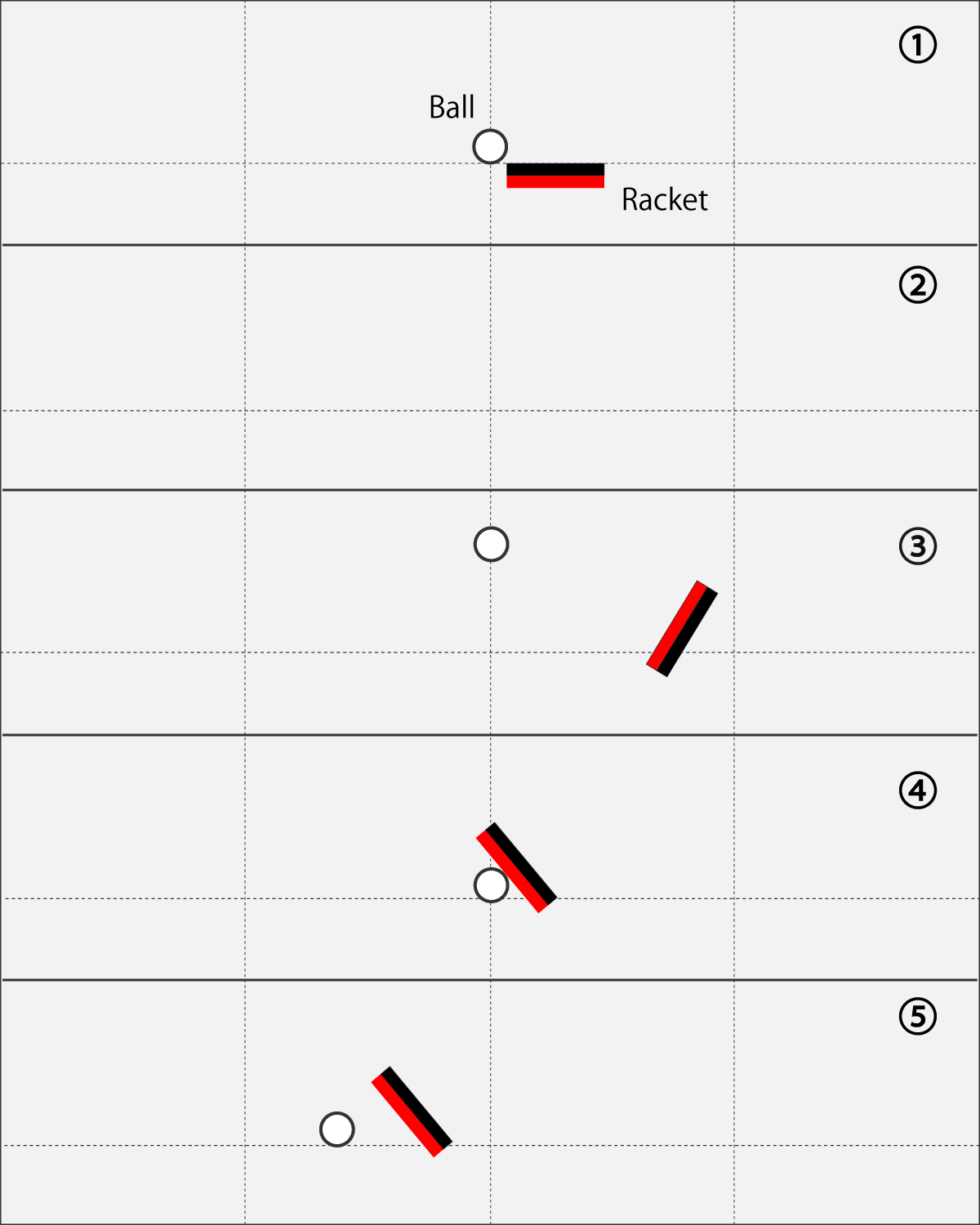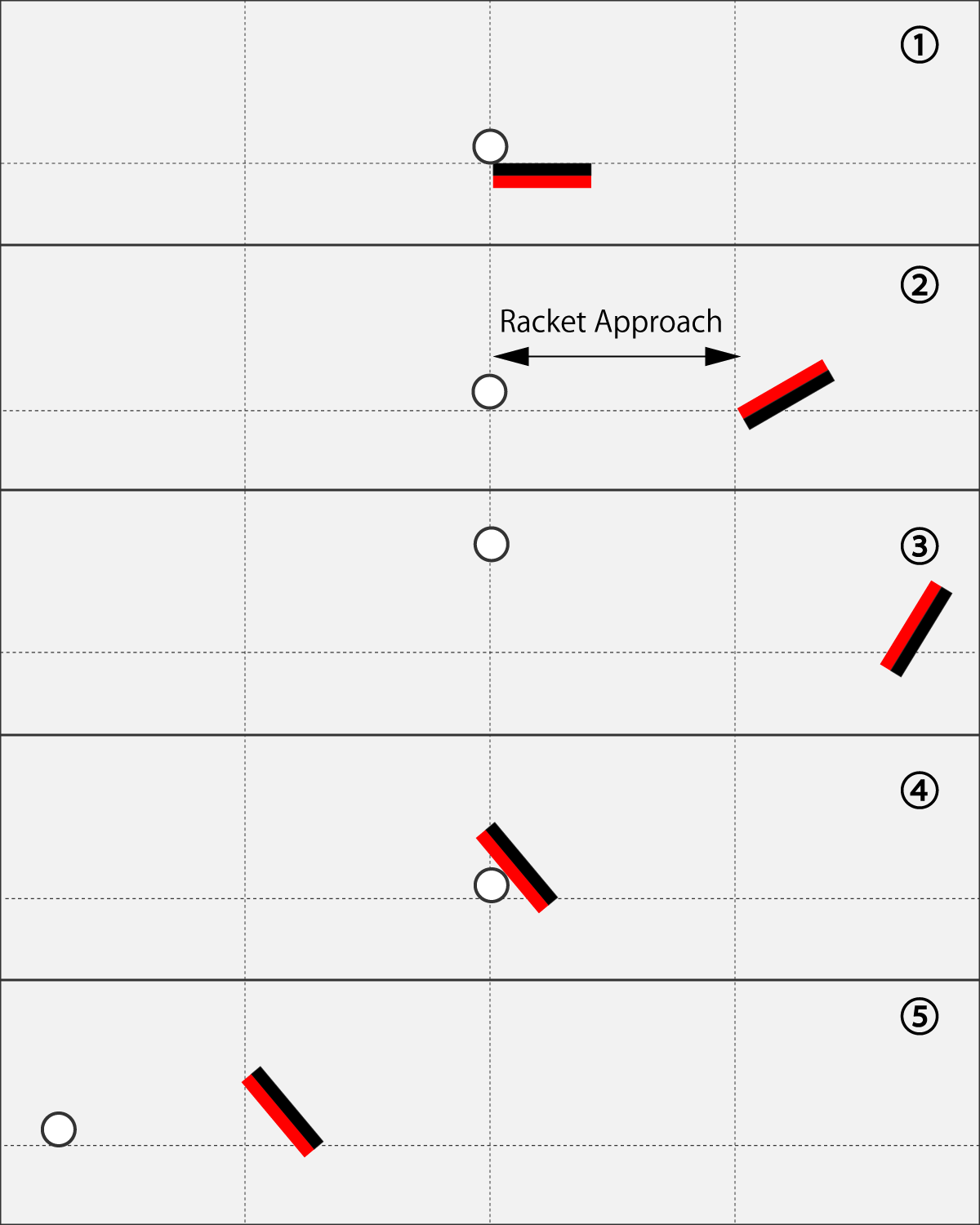Part 4. Tactics against Various Rubberers (Service)
4.2. The Racket Approach in the Service
On this page explains "the racket approach in the service". This is the most basic and important swing technique in the service.
The racket approach is the process of pulling the racket backward before throwing the ball at the service.
There are two types of service swings: "the swing with no racket approach" and "the swing with the racket approach".
"The service with a racket approach", it makes you a margin of time to empower to the ball while it can also widely apply to many kind of service.
From today, let's make a strategy to focus on your services that have the racket approach.
Your table tennis will change significantly.
The following figure is the cartoon of time series with five frames from the top to the bottom.
4.2.1. The swing with no racket approach

The left figure is one example of the swing with no racket approach.
The figure shows positional relation between a ball and a racket at the service.
①. You place the ball on your left palm, and set the racket in your right hand.
②. You skip the process of racket approach.
③. You toss the ball, and begin to pull the racket backward. You begin to swing forward direction.
④. The racket strikes the ball.
⑤. The ball flies toward the opponent.
This swing have a drawback, is not enough room to swing because it has not a racket approach at the ②. You cannot pull a racket backward sufficiently, so you will not be able to give enough power to the ball.
Next, let's take a look at the swing with racket approach below.
4.2.2. The swing with a racket approach

The left figure is one example of the swing with a racket approach.
①. You place the ball on your left palm, and set the racket in your right hand.
②. Before your left hand toss the ball, your right hand take a racket approch.
③. At the toss, moreover you pull the racket backward then begin to swing forward direction.
④. The racket strikes the ball strongly.
⑤. The ball flies toward the opponent.
This swing is starting to pull the racket before you toss the ball in the ②, it has enough room to swing because racket approach is taken enough. Compared to the former ③, you can pull a racket deeply. Therefore, it is possible to increase the racket impact at the ④.
This figure is the case by Drive swing, but you can use also by Cut and other spin swing. The racket approach can provide a high spin on top of that.
4.2.3 The service according to the rule book
Let us make sure services in the rule book. It does not matter that the swing takes the racket approach.
2.06. THE SERVICE (www.ittf.com/handbook/)
2.06.01. Service shall start with the ball resting freely on the open palm of the server's stationary free hand.
2.06.02. The server shall then project the ball near vertically upwards, without imparting spin, so that it rises at least 16cm after leaving the palm of the free hand and then falls without touching anything before being struck.
2.06.03. As the ball is falling the server shall strike it so that it touches first his or her court and then, after passing over or around the net assembly, touches directly the receiver's court; in doubles, the ball shall touch successively the right half court of server and receiver.
2.06.04. From the start of service until it is struck, the ball shall be above the level of the playing surface and behind the server's end line, and it shall not be hidden from the receiver by the server or his or her doubles partner or by anything they wear or carry.
2.06.05. As soon as the ball has been projected,
the server’s free arm and hand shall be removed from the space between the ball and the net.
The space between the ball and the net is defined by the ball, the net and its indefinite upward extension.